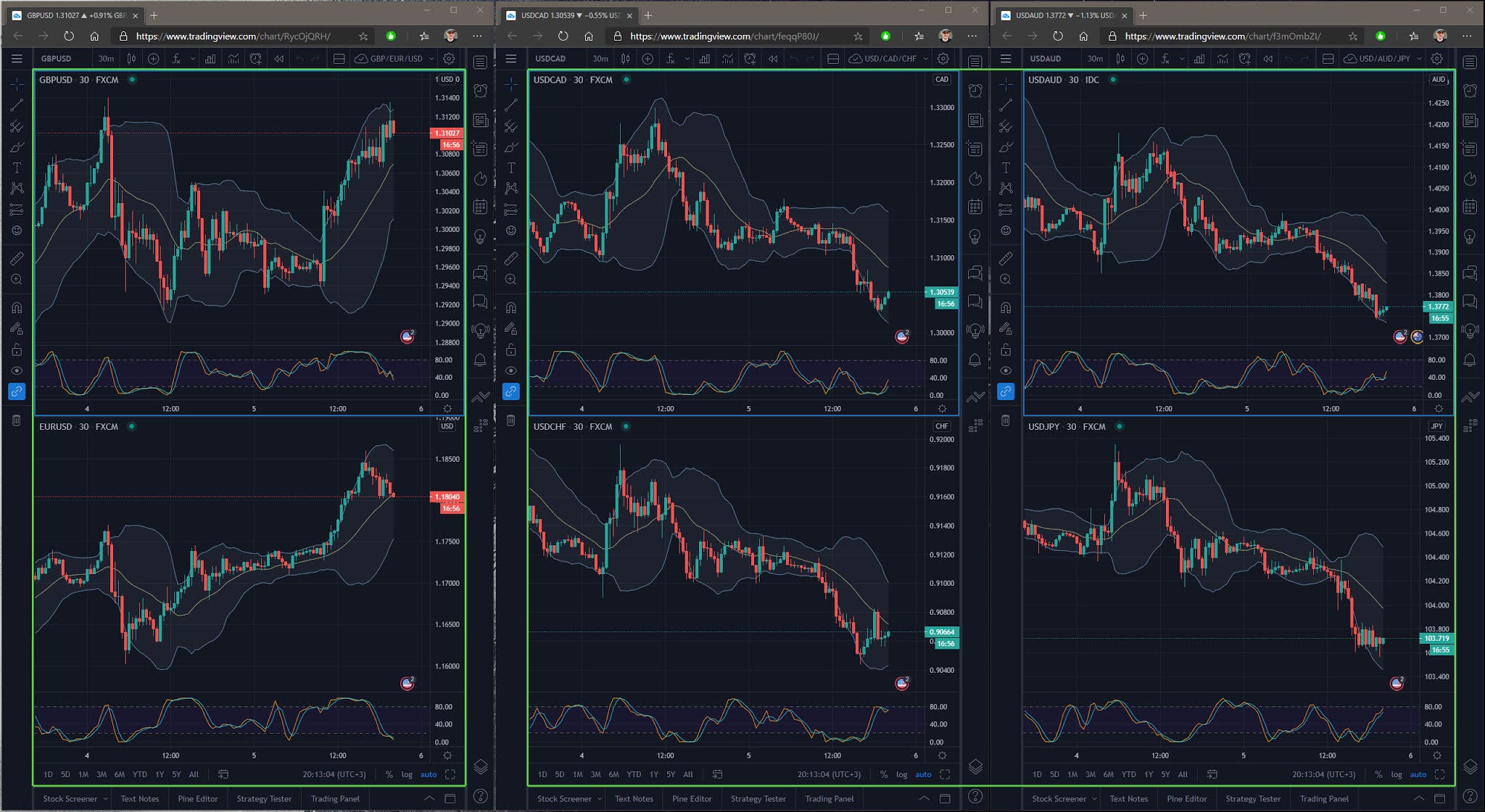The week of the US Presidential Election 2020. Joe Biden vs. Donald Trump. That was certainly an interesting event to happen during my third week of Forex trading. I dipped my toes into the market, but quickly realized that it's a particularly good time to lose money fast. On the other hand, since the market is a zero-sum game, of course that also results in an abundance of opportunity if you know what you're doing (i.e. not me).
For me personally, this was the perfect time to observe and better understand how and when currencies move together, either directly or indirectly correlated with each other, or when they don't. One of the things that I didn't really understand at all when I read through articles and theory was how as a Forex trader I should first focus on a few currency pairs and master those. So far I have been trading all over the place, looking for whatever appeared to be an interesting point to enter a trade.
Looking at the major currency pairs, this week made it very obvious to me how they are all traded in relation to the US Dollar and how an event like the US election influences the movement of these currencies.
These are 30 minute charts from Thursday, November 5 (EST), showing the 2 days directly after the US election started with the vote count still ongoing at the time. While there are small differences, it's plain to see how they all moved together based on what was happening and what was being reported in the news. It's also apparent how in a special time like this, fundamental data and news essentially overrides almost all technical analysis and price action based trading.
The interesting part is that even though the charts look very similar, the individual currencies actually trade very differently. What I am starting to understand is how not every strategy might be applicable to every currency. For example, GBPUSD tends to move more strongly in the short term and in terms of pips. When trading on short timeframes - 1 or 5 minute charts - and with a relatively narrow stop-loss such as 10 pips, it's easy very easy to get stopped out despite being right overall about where the price is going. On the other hand, with USDCAD for instance, a stop loss of 10 pips usually seems to be fine since a lot of times the currency doesn't appear to be moving as strongly or erratic on very short timeframes.
Another thing I am starting to understand is why I keep reading that as a trader (Forex or otherwise) I have to figure out what works for me personally. I was never looking to blindly copy and paste someone else's strategy and try to apply that mechanically without understanding what is going on exactly, why it might work, or why it might not. Although I can see why so many people try that and ultimately fail. There are so many nuances, moving parts, interactions, correlations and whatnot - it takes time, practice, effort and maybe most importantly persistence to fully figure this all out.
I am at the very beginning of this journey.

No comments
Post a Comment